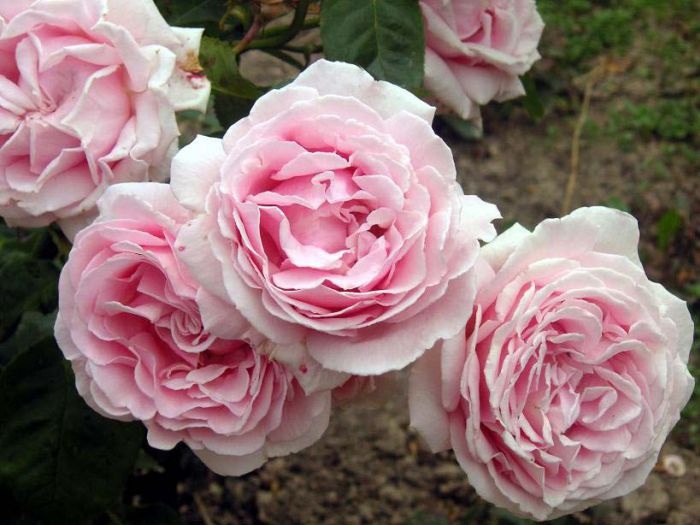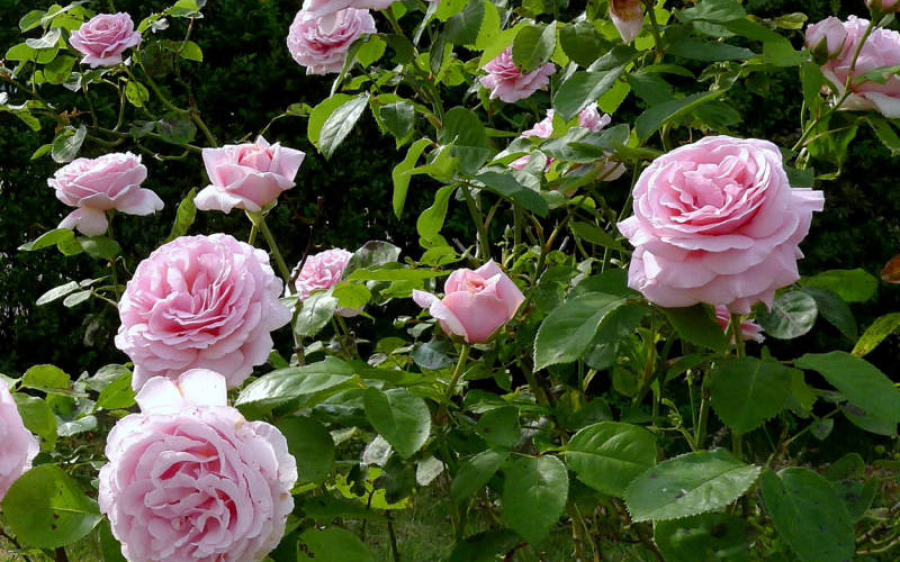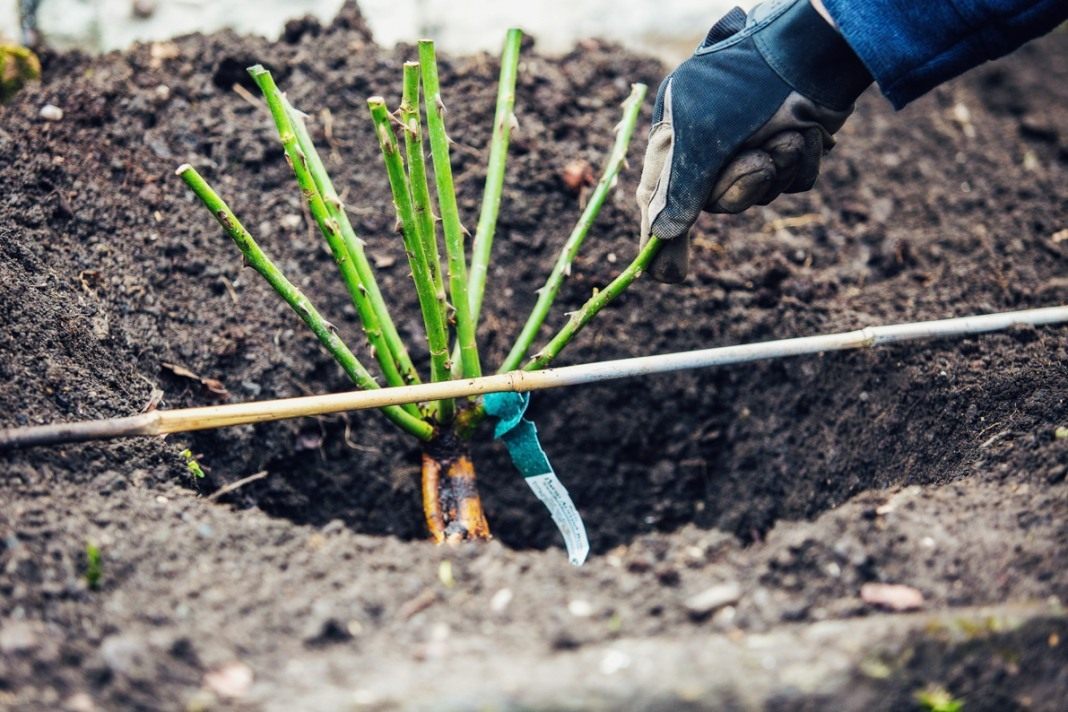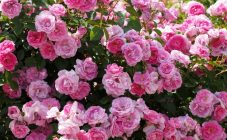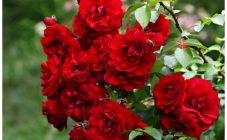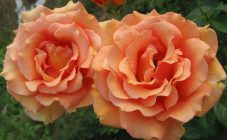Content:
Recently, on the plots of domestic summer residents, one can increasingly find the rose variety Frederic Mistral. This variety of roses is distinguished by bright, beautiful flowers with a delicate aroma and original color.
Rose Frederic Mistral is a young hybrid tea variety. This variety is a tall shrub with powerful, well-developed branches and large double flowers of an interesting pale pink hue. Experts say that this variety can rightly be considered one of the best in the world, because this rose, unlike many other varieties, has a powerful natural immunity to pests, viral and fungal diseases.
The history of the creation of the variety
The official name for this variety is “rose Frederic mistral”. The plant was bred in the UK in 1995 and soon gained popularity in many countries of Western and Eastern Europe, including Russia. English breeders initially set themselves the task of combining the disease resistance characteristic of English hybrid tea roses with the delicate and original color of modern European tea varieties. Officially, the plant belongs to the large group of English hybrid species "Romantica".
Characteristics and features of the variety
Frost resistance
Rose Frederick was originally designed for a mild climate, but Russian breeders zoned this variety for the middle zone and more northern regions of Russia. The plant tolerates light frosts well, but does not like severe frosts and sudden changes in temperature. For the winter, this variety needs to be covered; burlap or spruce branches are perfect for shelter. Also, this hybrid species is very sensitive to high soil and air moisture. If the summer is rainy, the duration and intensity of flowering can be significantly reduced. In order to overcome the consequences of an unsuccessful wintering, in early spring the plant affected by frost is cut short.
Bloom
The time and duration of flowering depends on the climate. In the climatic conditions of the Russian central strip, the rose blooms in the second decade of July and continues to bloom somewhere until mid-August. However, if the beginning of autumn turned out to be warm, this period can last until the second decade of September. If the end of summer and the beginning of autumn are rainy and windy, the flowers may deform and become covered with small brown spots of "rust".
Plant parameters
You can find out this variety by the following parameters:
- The height of an adult plant is 1 m 20 cm;
- The shape of the leaves is elongated, pointed;
- The color of the leaves is deep dark green;
- The color of the flowers is pale pink, with a cream shade;
- The scent of flowers is a bright scent, reminiscent of the scent of rose essential oil. At the end of flowering, a subtle note of lily of the valley appears in the aroma.
Also in the description of the variety it is said that the bright aroma of flowers attracts the attention of bees, so this rose can be planted in the territory of a home apiary. With proper care, the Mistral rose blooms for a long time. The flowers bloom together and keep well when cut, so this variety is often grown for sale.
Agricultural technology of cultivation
Requirements for soil, light and moisture
Rosa Frederic mistral does not tolerate shade well, she likes well-lit corners of the garden.
You also need to keep in mind the following:
- This variety will not grow on clay and marshy soils;
- A slightly acidic soil or soil with a neutral reaction is well suited for cultivation;
- It is not worth planting a plant where groundwater is close to the surface;
- The rose tolerates bright sunlight well and does not fade, therefore it will grow well and bloom in an open place, where there is no shade.
Landing
Planting a plant is carried out as follows:
- In the first ten days of March, seedlings are prepared, the prepared planting material is stored in a cool room;
- In the last decade of May - the first decade of June, the plants are planted in a previously prepared pit filled with a nutrient mixture;
- Before placing the plant in the hole, its roots are slightly pruned;
- The depth of the planting hole should be about half a meter so as not to accidentally bend the roots of the plant.
After planting, the seedling should be watered abundantly.
Care
Rose Frederic Mistral loves fertile soil rich in nutrients.
When caring for a plant, keep in mind the following:
- The young plant is watered every 4 days, then the frequency of watering can be reduced. The main thing is that during each watering the plant receives a sufficient amount of moisture;
- As soon as buds appear on the rose, watering is again increased, during flowering - reduced;
- For spring and autumn feeding of young bushes, potassium sulfate is used - this fertilizer helps the plant to tune in to intense flowering, in the fall - to prepare for a cold snap;
- After spring pruning, it is recommended to apply special industrial mineral fertilizers intended for roses;
- During flowering, you can not fertilize the bush with anything;
- Loosening of the soil is carried out monthly, after watering and after fertilization.
Advantages and disadvantages of the variety
The main advantages of the variety include the following:
- Bright aroma;
- Original painting;
- Good resistance to infections and parasites;
- The variety tolerates drought well.
Among the shortcomings, it should be noted that the flower does not tolerate frost and high humidity, and also does not like shade and does not winter well.
This variety will become a worthy decoration of a summer cottage. The main thing is to remember that he is quite picky about care.
